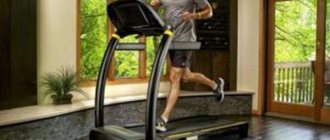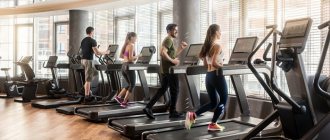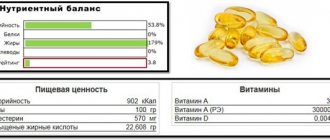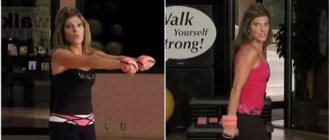Is it true that running on treadmills helps you lose weight? The employees of the sports discounter Mir-Sporta.com, who welcome you to this page, will never tire of answering this question: a good cardio machine gives men and women a unique opportunity not only to get rid of extra pounds, but also to tidy up the cardiovascular system and increase endurance , increase efficiency.
Is it possible to lose weight on a treadmill in a month?
Where does the weight loss process begin? In the century of high technology, it starts with finding the necessary, and most importantly, reliable information. Today we are looking for it on the Internet, which, in response to questions that interest us, produces a palette of stories in the style of “I lost 10 kg on a treadmill in a month!” Can such stories be believed? Of course yes.
Our research shows that
• a correctly selected exercise machine with the help of our specialists • a well-chosen training program • a balanced diet, which is an essential condition for “emergency weight loss”
in fact, they can work miracles and make it possible to say goodbye to extra pounds even faster than in 1 month.
You will excitedly watch how your kilograms melt away day by day on electronic scales, losing 1-2, and quite possibly more, kilograms in 1 week.
It all depends on your persistence!
Running technique: learning to move correctly
Proper running on a treadmill for beginners is based on correct movement technique. The latter includes the following elements:
- Hand movements;
- Body position;
- Footwork.
Hands
They move synchronously with their legs, in opposite orders. The hands are clenched into weak fists, the arms are bent at the elbow joint at a right angle. When the speed of movement increases, the frequency of arm swings also increases.
Frame
Leaned forward no more than 7°. The spine is kept straight, deflections in the lower back are not allowed. The head is raised, the gaze looks forward;
Legs
Let's look at how to properly run on a mechanical treadmill for medium distances or at high speed. In the first option, the rule of no knee lifting applies. The athlete runs, moving as in the exercise “sweeping the shin back”, however, without touching his butt with his toes. At the moment of acceleration, on the contrary, the knees need to be brought up and forward, as when running with a high hip lift. In both cases, the feet should be placed first on the toes, then rolled onto the heel.
Private errors
If you want to know how to learn to run on a treadmill, check out these common mistakes that many beginners make:
- Failure to comply with safety regulations. Potential for injury;
- Deflection in the body. Sets the critical load on the spine;
- Ignoring warm-up and cool-down. Excessively overloads muscles and joints;
- Exercise when you feel unwell. Dangerous for health.
- Incorrect angle of the walkway. At the initial stage it should not exceed 5°.
So, we have looked at how much you should run on a treadmill, and also studied the technique of movements. Below we present treadmill running programs that any athlete can successfully use.
How to run on a treadmill to lose weight?
So, let's lose weight on the treadmill! In the minds of the vast majority of people, training on one of the simulators presented in our online store is a boring and monotonous process.
This is the greatest misconception. The sports units offered to your attention from the world's leading manufacturers have a wide range of modes, changing which you will vary the load and will not let yourself get bored.
There are several “basic” types of running training:
• stationary - involving measured running activity without sudden accelerations and jerks; • interval - the most effective for developing running potential and losing weight. During such training, slow running alternates with fast running (5-10 minutes of calm movement followed by a jerk for 1-2 minutes).
Those who want to lose weight on the treadmill without having sufficient “sports experience” should definitely start with a calm stationary workout. Don't rush forward. Start by walking. Get a heart rate monitor. Gradually increase the speed, monitoring your pulse and remembering that subcutaneous fat “burns” more efficiently when the heart beats at 50-70% of the maximum possible heart rate.
Some people will say that the key advantage of the simulators presented on our website is the presence of a special coating that protects the joints (and they will be absolutely right!), but others will put sensors in the first place - electronics that allow you to monitor the results after a treadmill and count lost calories. If you still haven’t bought an exercise machine, then a heart rate monitor will help you count calories, which connects with a special program on your smartphone and makes it possible to control calorie loss, even if you are running in the park. If you don’t have a heart rate monitor yet, know that in 1 hour of intense walking you will burn about 500 calories.
Run at high altitudes
You've probably seen or heard of boxers running in the mountains, where the air is colder and there is less oxygen, making breathing difficult.
By doing high-altitude runs during training camp, the body adapts to the climate, so when they enter the ring, such boxers are full of energy. High altitude also means you'll be doing a lot of uphill running, which will greatly strengthen your legs.
If you don't have high altitudes nearby, try running during the coldest part of the day in areas with uneven surfaces where you'll have to run uphill. Once your body adapts to these extreme loads, you will find that you can cover much greater distances under normal conditions than before.
Treadmill training programs for beginners
Let's look at the question “How do you lose weight on treadmills?” in more detail and we will tell you how to do this without harming your health.
It would be reasonable to start training for those who last trained at school after a comprehensive consultation with two specialists - a doctor and a sports instructor, who (if he has the proper qualifications) will determine individual training algorithms.
It is important to remember: training on a treadmill does not need to be “forced” in an attempt to “give off” the results of Kenyan runners.
Start with walking, working not on speed, but on the duration of the workout. Walking for 20 minutes, half an hour, and then an hour will perfectly prepare your heart for stress.
But keep in mind that you can only lose weight on the treadmill if you increase the intensity wisely!
“Hurry up slowly!” This Russian proverb should be perceived in our context as the need to gradually increase the pace of walking, gradually leading it to easy running.
Program No. 1
• Warm up by walking on the machine at an easy pace of 4-5 km/h (10 minutes) • Increase the pace by holding the sensors with your hands and bringing the speed to 7-9 km/h (5 minutes) • Return to a calm pace, catch your breath (5 minutes) • Noticed the inscription “Incline”? This is the slope. Increase it from 0 to 6° and try to walk at an intense pace, keeping a close eye on your heart rate.
If you hit your maximum heart rate mark during the second phase of training (for example, your heart rate exceeds 180 at age 40), use this simple program until your heart rate normalizes and remains in the acceptable “echelon.” .
Program No. 2
• Warm up as before, walking at a speed of 4-5 km/h for 10 minutes • Slightly increase the speed already in the second phase (up to 5-6 km/h), increasing the incline to 3°. Control your heart rate! Everything is fine if it does not “break through” the maximum permissible mark. • Turn the tilt down to 0°. Walk vigorously at a speed of 7-9 km/h. • Attention! Let's start running. At “zero incline” we run at a speed of 10-12 km/h for 2-3 minutes, monitoring the heart rate. • Cool down. Do not neglect it by abruptly stopping training, because this can harm your heart! Walk slowly and steadily at a speed of 4-6 km/h for 10-15 minutes.
If you do everything right, you will start to feel better within the first weeks of classes!
Training programs for experienced athletes
A somewhat naive question: “Do treadmills help you lose weight?” will disappear automatically over time. • you train • you follow the process • you see the result.
A treadmill helps not only to lose weight, but also to normalize the activity of the cardiovascular system, which in another (non-sports) case would be put in order with medication or even surgical methods.
Enough walking! It's time to run on the treadmill for nitroglycerin, bypass surgery, and heart attack.
Program for experienced athletes No. 1
• do not neglect warming up, even when progress is obvious - 5-10 minutes of walking at a speed of 4-5 km/h before running is mandatory to prepare the heart of even a trained athlete. • Increase speed in stages. First, run at 8 km/h. Monitor your heart rate and time. If the upper limit of your heart rate is not “broken,” increase your running by 2 km/h every 2 minutes. So, 10, 12, 14 and (eventually!) 16 km/h • Important! Choose a speed at which you can “hold on” for 20 minutes, while being in the “echelon” of 60-70% of the maximum possible heart rate. If you are 40 years old, then 70% of the maximum possible frequency is 126 beats per minute (220 - 40 = 180, 180:100x70% = 126). • Reduce your speed. Don’t drop it from 16 km/h to 6, but lower it the same way you raised it - step by step! • Having dropped to 5-6 km/h, walk quietly for 10-15 minutes.
Why is it so important to run at a heart rate of 60-70% of your maximum (220 minus your age)?
It is at this pulse that fat not only melts, but also does not return. This is how those who really want to lose weight train.
Program for experienced athletes No. 2
Interval training! It's time to test yourself and, perhaps, slightly boost your results in anticipation of the half marathon (21 km 97.5 m) or even the marathon (42 km 195 m).
Interval training is ideal for those who cannot spend 1 hour exercising at least 5 times a week. It's shorter, but more effective.
So
• Warm up (required!) - walking at a speed of 4-6 km/h • Run lightly for 2-3 minutes (7-8 km/h) • Run quickly (12-14 km/h) for 1 minute • Jerk ! How long will you pull? 16 km/h? 18? 20? 22?! This acceleration is the most important stage that allows you to develop speed, run at this “explosive” speed for 40 seconds or even a whole minute • Switch to a slower run of 10-12 km/h, but at the same time (!) add an incline of 6°. This stage should last from 7 to 12 minutes • Start walking - 5 minutes at a speed of 5-6 km/h.
There is nothing better than interval training for those who really want to lose weight! Good luck!
Results after running on a treadmill
You can often find skeptical reviews online, saying that it is impossible to effectively lose weight after running. This is a catastrophic misconception. Often people actually train hard, running in the park, working out in the gym, purchasing all kinds of sports equipment for their home.
At the same time, many people forget one simple and obvious truth for specialists. Results after running on a treadmill, after jogging at the stadium or after visiting a sports club can only be seen if you combine training with proper nutrition.
What's the point of running like Olympic champion Haile Gebrselassie if after that, feeling a beastly appetite, you “crawl into the refrigerator headlong”, devouring food supplies? Eating within an hour and a half after training is strictly prohibited, otherwise the result will be scanty or not at all.
What about running on the treadmill? Is it possible to eat? Need to! But only carbohydrate-containing foods: fruits, vegetables, cereals with “long-lasting” carbohydrates. For example, oatmeal.
Important! Don't eat after 6 p.m. or at least three hours before bedtime. And you will be happy in the form of lost kilograms in the first week.
Gym or street: where is it better to run?
The load during running depends on many factors. Among the main ones:
- speed;
- surface relief;
- air temperature.
The running speed on the treadmill is set by the trainee himself. Experts clarify that the moving belt reduces the load, mainly working the anterior thigh muscles. When moving on a magnetic or mechanical track, the load increases: the quadriceps and gluteal muscles are included in the work.
For comparison, when jogging outside, all major muscle groups are involved, including the abs and back.
It is easier to run on a smooth path than on rough terrain. Potholes, irregularities, and stones found on the street complicate the process. It is even more difficult to move through wet grass or sand. Such a run will increase the load and force you to strain your muscles more, but the result may be injury.
Nobody argues: it’s very pleasant to run along a forest path on a clear summer morning. However, many have to choose other, less pleasant routes, and the weather is not always good. Heat, high humidity, and extremely low temperatures increase the stress on the body and cause rapid fatigue. Jogging in extreme conditions is contraindicated for people experiencing problems with the lungs, heart, and blood vessels.
It is easy to set a comfortable temperature in the gym and provide a flow of fresh air. The runner does not have to worry about sudden rain, snow, fog or car fumes.
The conclusion is simple: outdoor exercise is more difficult, but it is not always possible to control the load. Jogging on the treadmill is less tiring; the built-in counter will help you understand how many calories you burned during your workout.
This is interesting: all the nuances of spring running outside.
Increasing loads
Well, what can I say? Inept, overly ambitious, prematurely forced increase in loads is fraught with consequences.
If you remembered that you were a “champion” in running in your class or in the area, and decided to repeat your past feats now, rushing “right off the bat,” know that a treadmill for weight loss will do more harm than good.
It is the inept increase in loads, the desire to achieve everything at once, that is the cause of resentment towards the sports unit, which is designed not to harm health, but to become a tool for improvement.
Do not hurry. “Listen” to your body. Mild and “pleasant” pain in the legs after the first classes is the norm. But lingering muscle and joint pain and ongoing tachycardia are reasons to • return to a “light” training program • consult with an instructor or doctor.
You should wisely increase your loads so as not to bring yourself to the point of exhaustion, after which you want to lie down and fall asleep. A “parity” system of distribution of walking and running is effective. Did you run for 10 minutes today? Take the time to walk for 10 minutes at a speed of 4-6 km/h.
Everything will be fine. Remember! Training should be fun, not frustrating.











